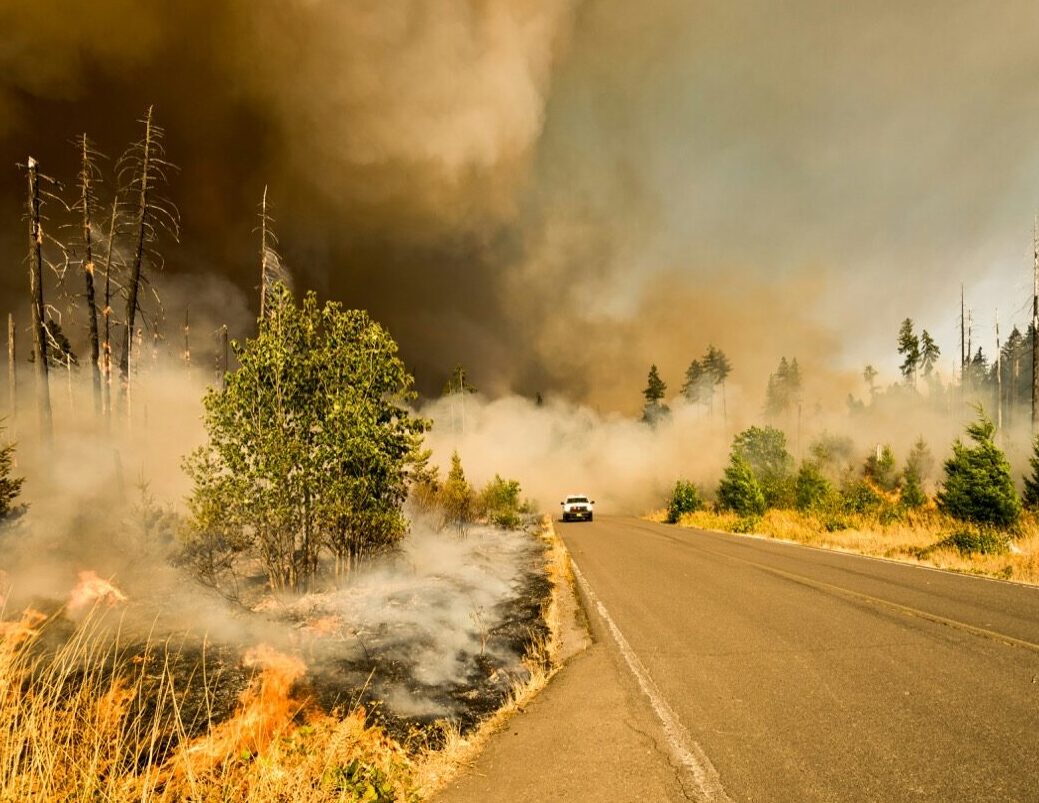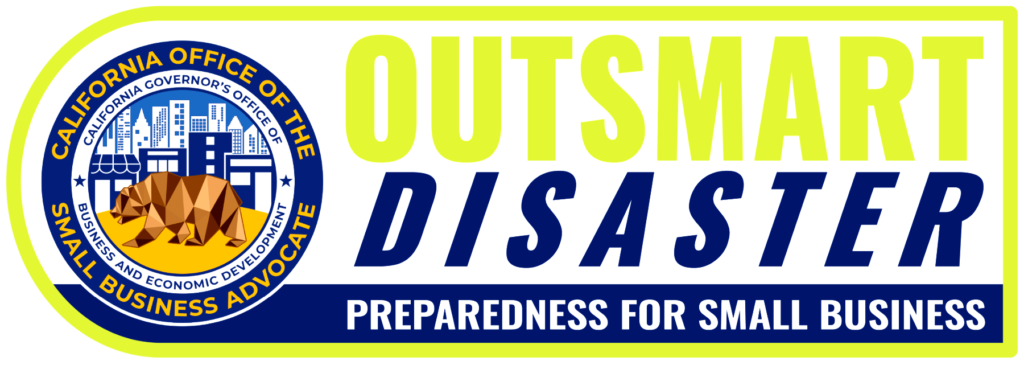Prepare for Emergencies
Did you know? According the Small Business Administration (SBA), statistics say that 25% of businesses won’t open again after a disaster. In California, according to California Office of the Small Business Advocate (Cal-OSBA), that number climbs to 40%.

Disasters can take many forms and the financial cost of rebuilding after a disaster can be overwhelming for a small business. If you’re prepared for emergencies, you’ll be in a better position to recover and continue operations should disaster strike.
Statistics show that if a small business cannot resume operations within 10 days of a natural disaster, its chances of surviving are very low, and many will most likely permanently close their doors. Aside from natural disasters such as wildfires, earthquakes, and flooding, it’s also important to establish a plan for economic disasters. Our SBDC can help your business prepare for the unexpected. Learn more about all we have to offer or sign up for no-cost services.
We also provide the following advice and resources from both Cal-OSBA and the SBA to help you prepare for disasters.

Cal-OSBA has created the Outsmart Disaster’s Resiliency Roadmap as a resource for California small businesses and helps you to develop a preparation plan with 6 simple steps. Cal-OSBA’s guide will take you step by step through creating a Resiliency Roadmap so you can plan during the calm and bounce back when things get tough.
Each step is assisted with forms to help you customize your Business Continuity Plan. Whether you’re just getting started or updating your plan, this is a practical way to build resilience, one step at a time. Cal-OSBA also provides Business Preparedness tips and recovery resources.
The 6 Key Steps
- Recognize Potential Threats: Identify, prioritize, and document risks unique to your business.
- Establish Clear Communication Channels: Gather contacts, plan communication, and set up emergency alerts
- Understand Your Operations: Prioritize processes, document equipment, and secure IT systems.
- Hazard Mitigation Planning: Assess building safety, inventory, backups, and safety features.
- Understand Your Insurance and Finances: Review insurance, plan finances, and explore disaster relief options.
- Create and Test Emergency Response Plan: Train employees, test plans, and prepare an emergency kit.
Visit Cal-OSBA to learn more and get the forms.

Step 1: Assess your risk
Every business has unique vulnerabilities and weaknesses. Knowing which disasters are most likely to affect your business can help you to return to operations faster. A back-to-business self-assessment can help you to assess your risks for common hazards such as hurricanes, wildfires, flooding, or even cyber attacks.
Step 2: Create a plan
Your response plan is your roadmap to recovery, so it should be tailored to your business’s specific needs and operations. It should address immediate priorities and be easy to access. Checklists and online toolkits are effective resources to help you develop your plan. Consider the following:
- The SBA Business Resilience Guide simplifies the process of preparing for and recovering from a disaster, helping to reduce your risk.
- The IRS guide on preparing your business for a disaster.
- The Federal Emergency Management Agency (FEMA) emergency preparedness checklist and toolkit.
Focus on disasters that pose a realistic risk to your small business. Consult the following resources to lessen the financial impact of disasters and reopen your business quickly.
- Tornado safety tips
- Wildfire safety tips
- Flood safety tips
- SBA guidance on strengthening your cybersecurity
- Cybersecurity planning guide
Step 3: Execute your plan
Practice your plan with your staff so you’re ready when a disaster occurs
You may be eligible for a low-interest disaster recovery loan through the SBA for damaged and destroyed assets in a declared disaster. These include repair and replacement costs for real estate, personal property, machinery, equipment, inventory, and business assets. Check to see if one of these loans applies.
- Home and Property Disaster loans
- Economic Injury loans
- Military Reservist Economic Injury Disaster loans
Submit your SBA disaster loan as soon as possible, then ask your SBA representative about increasing your physical damage loan for mitigation purposes. There is no cost to apply, and you are under no obligation to accept a loan if approved.
Help protect your home or business against future disasters. See how rebuilding stronger is within reach.
For more information on what to do if disaster strikes your business and additional resources and links, please visit Cal-OSBA and the SBA.